How Many Tablespoons are in 1/4 Cup ? (Easy Conversion Tips)
How many tablespoons in 1/4 cup? Let’s unravel this kitchen conundrum and put an end to measurement guesswork once and for all! Level up your culinary game as we spill the beans on this essential conversion.
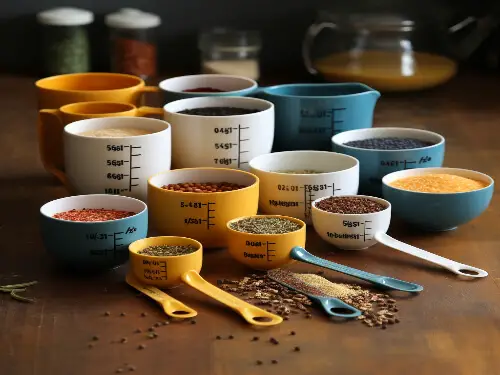
Disclosure: This Page May Contain Affiliate Links, Which May Earn Me A Commission, With No Additional Cost To You. Each Of These Links Are Referenced With The Asterisk Symbol * Next To It, At All Places It Is Posted.
When it comes to baking, getting the measurements right is crucial. Imagine adding too much or too little of an ingredient. This can completely throw off the taste and texture of your dish.
That’s why accurate measurement conversions are a game-changer in the kitchen. From baking a fluffy cake to crafting a savory sauce, knowing the correct measurements ensures consistent and delicious meals every time.
Today, we’re zooming in on the conversion between tablespoons and cups. Tablespoons are versatile and often used for smaller quantities of ingredients. Cups are used for large-volume measurements
Knowing how these two measurements relate to each other opens up a world of possibilities in the kitchen.
By understanding how many tablespoons are in 1/4 cup, you’ll have the power to effortlessly adapt and scale recipes to your needs. Say goodbye to guesswork and hello to culinary mastery!
Measuring Spoons Vs Cups
Both measuring spoons and cups are kitchen essentials. They play vital roles in measuring accurate ingredient quantities.
Measuring spoons are small utensils. They are designed for measuring small amounts of spices, flavorings, or liquids.
Measuring spoons offer convenience and accuracy. It allows you to add the right amount of ingredients to your recipes.
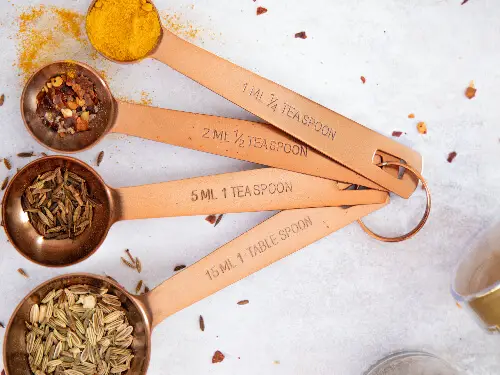
On the other hand, measuring cups are larger containers. They are used to measure larger volumes of both dry and liquid ingredients.
Measuring cups provide a consistent way to measure ingredients.
The choice between measuring spoons and cups depends on your recipe. For small quantities, such as a teaspoon of vanilla extract, use a measuring spoon. When it comes to larger volumes, like a cup of all-purpose flour or a half cup of oil, measuring cups are your best bet.
Both measuring spoons and cups are essential tools in your kitchen arsenal. By having them on hand, you can tackle any recipe with confidence.
Imperial System Vs Metric System of Measurement
Two most popular type of measurement systems are Imperial and Metric.
The Imperial system is commonly used in recipes from the United States and a few other places. It includes units like cups, teaspoons, ounces, and pounds.
If you’re used to cooking with these measurements, they can feel familiar and comfortable.
However, keep in mind that the Imperial system may not always provide the precision you need. You might need to do some extra conversions to get accurate results.
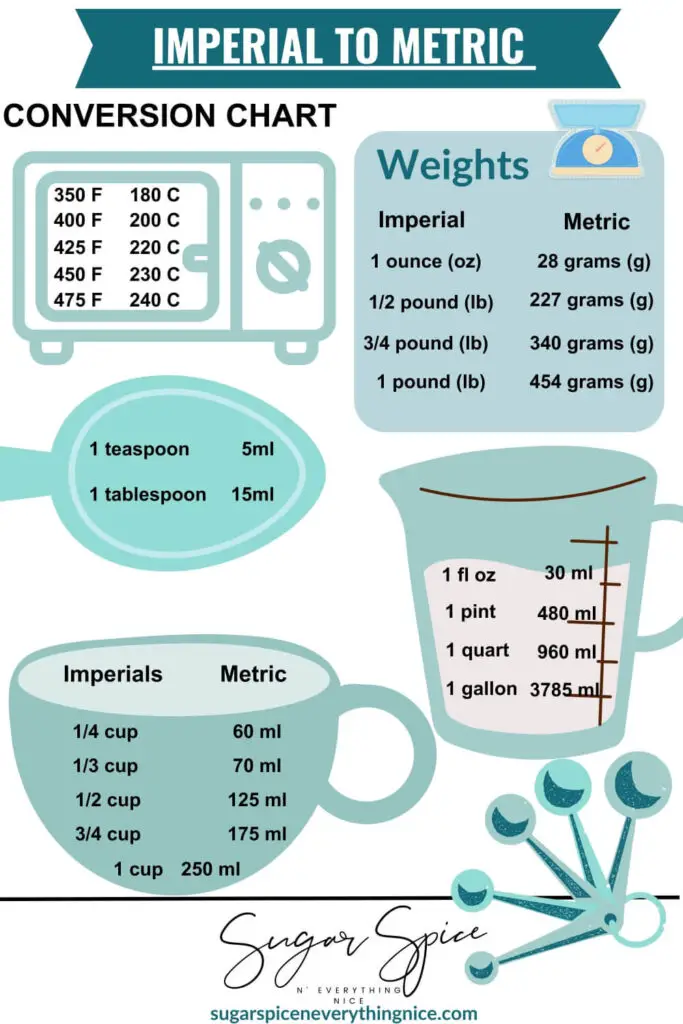
The Metric system is widely used in different regions and countries around the world. This includes the United Kingdom and most of Europe. It uses units like grams, milliliters, kilograms, and liters.
What’s great about the Metric system is its precision and consistency. It makes it easier to measure ingredients accurately.
Navigating the Conversion Challenge
Different recipes may use Imperial or metric units. You need to know how to convert between the two, to follow the recipe.
Here are some helpful tips to navigate the conversion challenge:
- Conversion Charts and Online Tool can help convert between Imperial and Metric measurements. These resources can provide the equivalent measurements for any type of ingredient.
- A kitchen scale* is a valuable tool. It allows you to measure ingredients in grams or ounces. It provides precision and consistency to your cooking and baking recipes
- Familiarize yourself with some common conversion ratios. For example, 1 cup is approximately 240 milliliters, or 1 ounce is about 28 grams. Having a few go-to conversion ratios memorized can save time and effort in the kitchen.
- Recipes are not set in stone. Adapting them to suit your preferred measurement system is entirely acceptable. Feel free to convert the units to ones you’re comfortable with, such as using cups instead of grams or vice versa. But, keep in mind that some recipes, especially in baking, require exact measurements.
- When using recipes from different sources, be aware of the measurement system used. Pay attention to any notes about units of measurement to avoid confusion.
US Customary System (USCS) vs US Legal Cup
US Customary System (USCS) is the common measurement used in the United States for everyday purposes. It includes units like cups, teaspoons, tablespoons, ounces, and pounds.
This is the measuring system that many home chef are familiar with.
The US Legal Cup is also known as the nutritional cup. It is defined by law for nutritional labeling purposes.
The US Legal Cup is used to provide standardized serving sizes on food labels and in nutrition databases.
US Customary System
- ¼ US Cup = 59.157 mL
- ¼ US Cup = 4 US tablespoons (Tbsp)
- ¼ US Cup = 3.943 metric tablespoons (UK, international)
US Legal Cup
- ¼ US Legal Cup = 60 mL
- ¼ US Legal Cup = 4.058 US tablespoons (Tbsp)
- ¼ US Legal Cup = 4 metric tablespoons (UK, international)
Imperial Cup vs Metric Cup
Metric cups were initially derived from the metric system. But they are not used in the modern SI units anymore.
The US Cup and the Imperial Cup are not precisely identical either. While 1 Imperial cup is equivalent to 9.61 US fluid ounces, 1 metric cup is equal to 10 Imperial fluid ounces.
With that said, when it comes to converting ¼ of an Imperial cup, there is a slight variation.
The small differences are not significant when measuring small quantities. But they can become more relevant when dealing with larger amounts.
- ¼ metric cup (international) = 62.5 mL
- ¼ imperial cup = 71.033 mL
- ¼ metric cup (Australia) = 4 Australian tablespoons
Imperial Tablespoon vs Metric Tablespoon
The Imperial tablespoon is slightly larger than the metric tablespoon. Imperial tablespoon is about 17.75 milliliter. The metric tablespoon is about 15 milliliters.
Importance of Precise Measurement in Cooking and Baking
Accurate measurement is vital in cooking and baking for a few key reasons:
- Precise measurements ensure that your dishes turn out delicious every time you make them.
- Proper measurement helps you achieve the right balance of flavors. This ensures that no ingredient overpowers the others.
- Accurate measurements contribute to the desired texture and structure of your dishes. This is especially true when it comes to baked goods.
- Cooking and baking involve chemical reactions. Precise measurements ensure that these reactions occur as intended, resulting in successful recipes.
- With precise measurements, you can easily recreate your favorite dishes.
How Many Tablespoons in 1/4 Cup
When you come across a recipe that requires ¼ cup, but all you have on hand are measuring spoons, resist the temptation to eyeball the ingredients. Instead rely on a straightforward calculation.
Step 1: The general rule is that there are 16 tablespoons in 1 cup. This is the conversion factor.
Step 2: Break it down. Since we’re dealing with one-fourth cup, we need to divide the cup into equal parts. Divide 16 by 4, and you get 4 tablespoons.
Step 3: So, to answer the burning question, “How many tablespoons in 1/4 cup?” The answer is 4 tablespoons.
Calculation Breakdown
We know :
1 cup = 16 tablespoons
Thus,
(Number of cups)*16 = Number of tablespoons
This is the simple conversion formula.
So, to figure out ¼ cup equals how many tablespoons, we have:
(¼ cup)*16 = 4 tablespoons
In other words, there are four tablespoons in one cup.
This is the answer to both how many tablespoons in ¼ cup dry and how many tablespoons in ¼ cup liquid.
Knowing this conversion ensures that you can accurately measure out a quarter cup of an ingredient in any recipe.
Remember, the conversion rate holds true for most standard recipes. This ensures consistency across your culinary creations.
Easy Conversion for Various Ingredients to Measure How Many Tablespoons in a 1/4 Cup
- ¼ cup of butter equals 4 tablespoons of butter. This is equal to half a stick of butter or ⅛ of the standard package.
- ¼ cup cocoa powder measures 4 dry tablespoons.
- ¼ cup of sugar also measures to 4 tablespoons of sugar
- ¼ cup flour, whether it’s all-purpose, whole grain, or gluten-free, is equal to 4 tablespoons.
- ¼ cup of oil, including olive oil, is equal to 4 tablespoons.
Cups to Tablespoon Conversion Chart
PIN the Image below to use for Easy Tablespoon to Cups Conversion later!
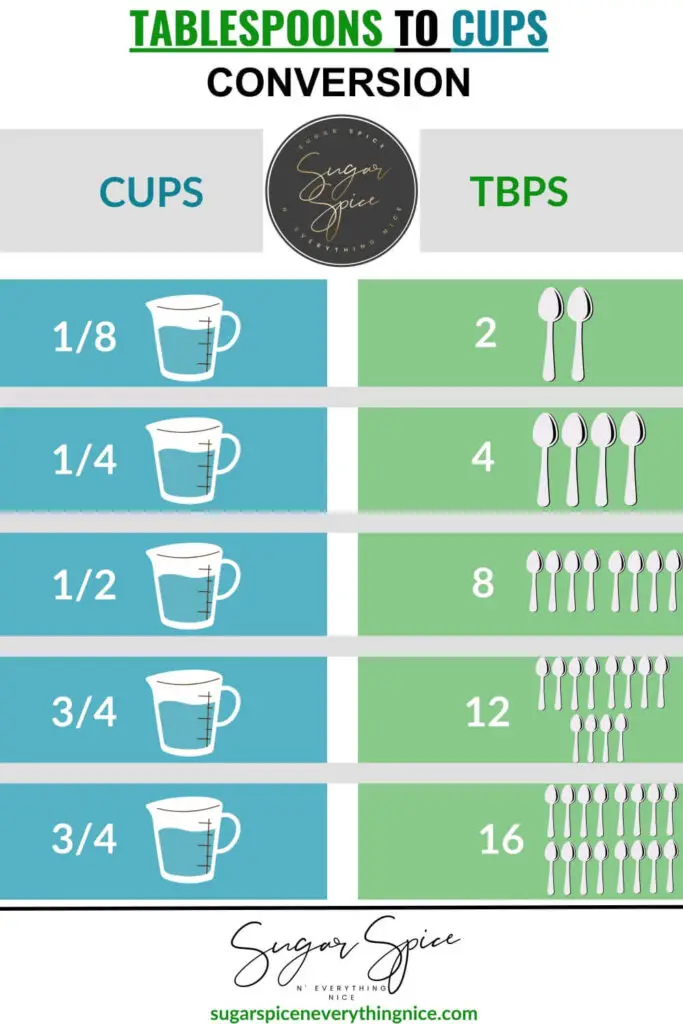
Cups to Tablespoon Conversion Program
Cups to Tablespoons Converter
Benefits of knowing How Many Tablespoons in a 1/4 Cup
The usefulness of knowing the conversion between tablespoons and cups is more than just a party trick. These handy measurements have practical benefits that enhance your cooking experience:
- You gain flexibility in adjusting recipe quantities according to your needs. You can scale recipes up or down, ensuring consistent results.
- Knowing the conversion allows you to adapt recipes that use different measurement units. If a recipe calls for tablespoons but you prefer working with cups, you can confidently make the necessary adjustments.
- Sometimes, you might run out of a particular measuring tool. Knowing the conversion empowers you to substitute one measurement unit with another.
- Most precise measurements are needed in baking to guarantee delicious results. Knowing the conversion ensures that your dishes turn out as intended.
Different Ways to Measure 1/4 Cup
There are a few different ways you to get quarter cup measurement. Here are three common methods:
Using a Tablespoon Measure
If you have a tablespoon, measure out four tablespoons to make a quarter of a cup. Each tablespoon is equal to 1/16 cup.
So four tablespoons add up to 1/4 cup.
Using a Liquid Measuring Cup
If you have a liquid measuring cup with cup and tablespoon markings, you can fill it up to the 1/4 cup line. Then, using a tablespoon, scoop out the liquid until the cup is filled.
Count the number of tablespoons it takes to reach the 1/4 cup line.
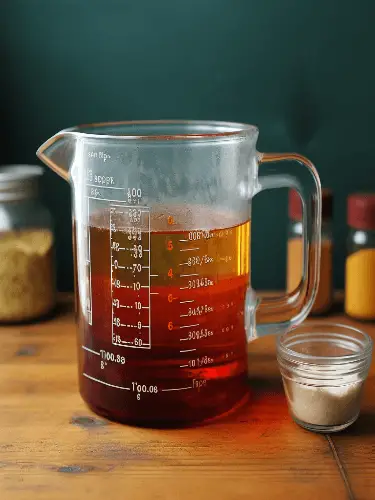
Converting from Grams
Another precise and easy way. Convert the grams measurement to tablespoons.
In this case, 1/4 cup is approximately 59 grams. One tablespoon is roughly 15 grams. So, divide 59 by 15 to find the approximate number of tablespoons in 1/4 cup. T
his calculation gives you around 3.93 tablespoons, so you can round it up to 4 tablespoons.
How to Convert Tablespoon to Teaspoon
Converting tablespoons to teaspoons is quite simple. Since there are 3 teaspoons in 1 tablespoon, you can use the following formula:
Number of teaspoons = Number of tablespoons multiplied by 3
For example, if you have 2 tablespoons and want to convert it to teaspoons:
Number of teaspoons = 2 tablespoons x 3 = 6 teaspoons
So, 2 tablespoons is equal to 6 teaspoons. Keep this conversion in mind. This will help you switch between tablespoons and teaspoons in your recipes.
Liquid Vs Dry Measurements
It’s important to note that liquid and dry measurements are not interchangeable. A cup of water and a cup of flour have different volumes, so don’t mix them up!
Liquid Measurements
Liquid measurements are used for ingredients that are in a liquid state, such as water, milk, oil, or sauces.
- Liquid ingredients are measured using liquid measuring cups*. Graduated measuring spoons specifically designed for liquids can also be used. These tools usually have spouts to helps pouring without spillage.
- Use a flat surface and fill the measuring cup or spoon to the appropriate marking at eye level for accuracy. This ensures that the measurement is precise.
Dry Measurements
Dry measurements are used for ingredients that are solid or dry, such as flour, sugar, spices, or grains.
- Dry ingredients are typically measured using dry measuring cups or spoons*. These tools allow you to level off the excess with a straight edge for accurate measurements.
- When measuring dry ingredients, use a scoop or spoon to fill the measuring cup until it overflows slightly. Level off the excess by running a straight edge, like the back of a knife, across the top of the measuring cup or spoon.
- Most dry ingredients should not be packed into the measuring cup. Fill and level tablespoons or cups for accurate results.
Measuring Tips and Tricks
- Always use standard measuring cups or spoons* when measuring in cups and tablespoons. Never measure with a coffee cup or any other kitchen utensils.
- When measuring dry ingredients like flour or sugar, don’t just eyeball it. Scoop a full cup. Then take a flat edge, like the back of a knife, and level off the excess. This is especially important in baking. Heaping tablespoons is not a precise amount and should not be used unless specified in a recipe.
- Now, if you’re dealing with ingredients like brown sugar or cocoa powder pack it into the measuring cup or spoon. Use the back of a spoon to press it down gently. We want to get every bit of that sweet goodness.
- Sift* dry ingredients to remove clumps and ensures accurate results. It makes the flour lighter and easier to mix into dough or batter.
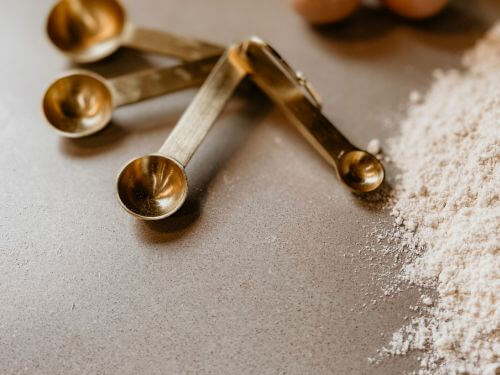
- When measuring dry ingredients use dry measuring cups. Specially-designed liquid measuring cups* work best for wet ingredients.
- There is not much difference between dry and liquid measuring spoons*. The round form is designed for liquids and oval for solids.
- When measuring liquids, make sure the cup is on a level surface and you’re eyeing it up straight.
- If you’re into precision, a kitchen scale* can be your secret weapon. It’s perfect for measuring ingredients by weight and getting things just right.
- Don’t Fear Adjustments. Recipes are great, but they’re not set in stone. If you feel like tweaking the measurements a bit or adding an extra pinch of seasoning, go for it.
- Remember, cooking is an adventure. Don’t stress too much about exact measurements. Experiment, play around, and enjoy the process.
Commonly Asked Questions
In the US customary units system, there are 3 teaspoons in a tablespoon. This conversion is important to know when following recipes and ensuring accurate measurements.
A regular spoon may approximate the volume of a tablespoon. But it is always best to use a proper measuring spoon for precise measurements. This ensures consistency in your favorite recipes and helps achieve the desired outcome.
Yes, there is a difference between liquid and dry measurements. Liquid measurements use tools like liquid measuring cups. Dry measurements use dry measuring cups or spoons. It is important to use the right tools for the best results.
To convert tablespoons to grams or milliliters, you’ll need to know the specific ingredient’s density. You can also use a conversion chart given above.
Absolutely! Different countries have their measurement systems. The United States uses the US customary system. But many other countries use the metric system.
There are 5 ⅓ tablespoons in ⅓ cup. In other words, there are 5 tablespoons plus 1 teaspoon in one-third cup.
Found This Post Useful?
Let me know in the comment section and share your feedback!
Don’t forget to share it with your friends and family!!
Join Sugar Spice Community:
Facebook Group | Pinterest | Instagram | YouTube
Looking for more recipes? Sign up for our Sugar Spice newsletter and our YouTube Channel for weekly videos. Also rate, comment and share this article!
Disclosure: This page may contain affiliate links, which may earn me a commission, with no additional cost to you. Each of these links are referenced with the asterisk symbol * next to it, at all places it is posted.
About the Author

Hi! Akshita & Midhun here! Welcome to our blog where we show simple yet awesome recipes for your cravings.
Akshita being allergic to egg, we are committed to providing egg-free recipes along with some vegan friendly options. Read more about us here!

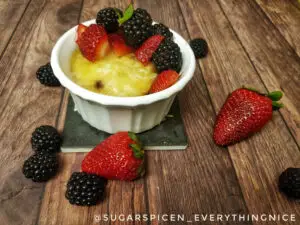
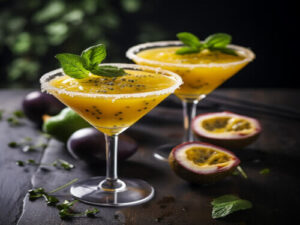
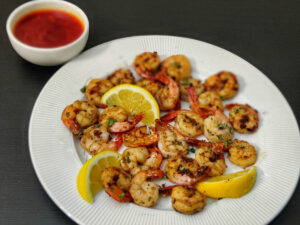
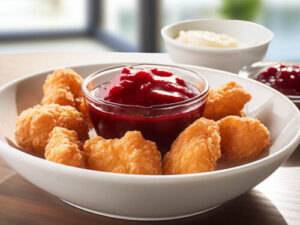
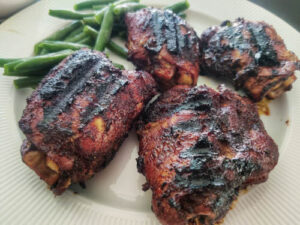
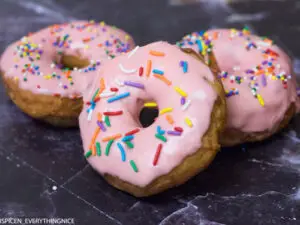
That is actually really informative. I was kinda confused on how many tablespoons in 1/4 or 1/2 cup. Thanks for explaining it well.
Thank you! This was so helpful. I’m not as precise as I should be with my measurements sometimes and some recipes really do benefit from being more cautious. Very handy little graphics to refer back to.
This was such a helpful guide to measurement conversions!! Bookmarking this and will be coming back to it every time I’m baking or measuring out ingredients, thank you so much!
This seriously helps me all the time! Thank you for all the conversions. It’s been a life saver.
So glad I found this post; I am always having a hard time with converting measurements! These are some really helpful and useful tips; definitely saving this for the future!